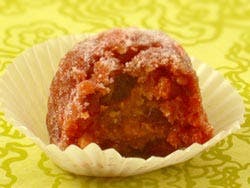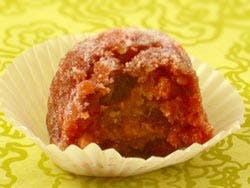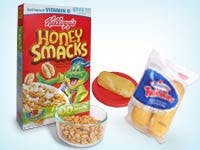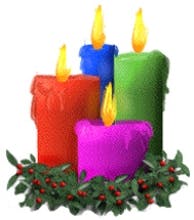Dental hygiene entrepreneurs, dispelling holiday myths, and a sugar saga
By Maria Perno Goldie, RDH, MS
This last issue of the year light-heartedly dismisses some commonly held beliefs about the holiday season.This issue also highlights some dental hygienists who have branched out of clinical dental hygiene to do other related things. These other “careers” are influenced by dental hygiene, and the critical thinking skills that are required to be a true professional. We learn many skills as dental hygienists that serve us well in life. Kris Dowling is still an educator, focused on general health, wellness and nutrition. She is still a prevention specialist. Laurie Samuels has ventured into a similar world of health coaching and nutrition. She is still a prevention specialist. Rachel Wall and Stacy McCauley continue to educate and maintain clinical dental hygiene skills, and have endeavored to include the entire dental team. They focus on clinical skills abut have added business and communication skills to their bag of tricks. They are still prevention specialists. Thanks to all of you for your valuable contribution to this newsletter and to our profession.Speaking of nutrition, this is the time of year when we are tempted even more by sweets! With the holiday season beginning, most of us will be increasing our intake of holiday candies and other related delicacies. Visions of sugar plums, holiday puddings, cookies, Bûche de Noël, and other delectable treats will entice us during the next few weeks.
This last issue of the year light-heartedly dismisses some commonly held beliefs about the holiday season.This issue also highlights some dental hygienists who have branched out of clinical dental hygiene to do other related things. These other “careers” are influenced by dental hygiene, and the critical thinking skills that are required to be a true professional. We learn many skills as dental hygienists that serve us well in life. Kris Dowling is still an educator, focused on general health, wellness and nutrition. She is still a prevention specialist. Laurie Samuels has ventured into a similar world of health coaching and nutrition. She is still a prevention specialist. Rachel Wall and Stacy McCauley continue to educate and maintain clinical dental hygiene skills, and have endeavored to include the entire dental team. They focus on clinical skills abut have added business and communication skills to their bag of tricks. They are still prevention specialists. Thanks to all of you for your valuable contribution to this newsletter and to our profession.Speaking of nutrition, this is the time of year when we are tempted even more by sweets! With the holiday season beginning, most of us will be increasing our intake of holiday candies and other related delicacies. Visions of sugar plums, holiday puddings, cookies, Bûche de Noël, and other delectable treats will entice us during the next few weeks.
The dictionary defines a sugarplum as a small round or oval piece of sugary candy.(1) English being the flexible language it is, the name could have come from the resemblance to a small plum, or it could have come from actual plums preserved in sugar, a relatively new idea in 16th Century England. Prior to this time, sugar was so expensive that it was used very sparingly, much as we would use a spice today. In the 1540's, sugar started being refined in London which lowered the price considerably, although only well-off families were able to use it lavishly. Preserving with sugar allowed the sweet fruits of summer to be enjoyed all year round, especially during the holiday season.With this in mind, it makes sense to increase our awareness of other foods, such as those we eat at the beginning of the day, that may not be as healthy as we might think. According to a newly released study, researchers identified 44 children’s breakfast cereals that pack more sugar in one cup than three chocolate chip cookies from a leading cookie manufacturer. Shockingly, the two worst breakfast cereals contained more than 50 percent sugar by weight.The Environmental Working Group is a team of scientists, engineers, policy experts, lawyers, and computer programmers that search government data, legal documents, scientific studies, and their own laboratory tests to expose threats to health and the environment, and to find solutions. Their research brings to light unsettling facts that you have a right to know.
In a recent communiqué, they say that parents have good reason to worry about the sugar content of children's breakfast cereals, according to their review of 84 popular brands. Kellogg's Honey Smacks, at nearly 56 percent sugar by weight, leads the list of high-sugar cereals, according to EWG's analysis. Honey Smacks contains 20 grams of sugar, and Twinkies contain 18 grams of sugar.(2)
A one-cup serving of Honey Smacks packs more sugar than a Hostess Twinkie, and one cup of any of 44 other children's cereals has more sugar than three Chips Ahoy! cookies. About one in five American children is obese, according to the federal Centers for Disease Control and Prevention, which has reported that childhood obesity has tripled over the past 30 years. As well, we know that sugar, when combined with dental plaque biofilm, causes tooth decay.Look for three things on cereal labels: cereals with a short ingredient list (added vitamins and minerals are okay); cereals high in fiber; cereals with few or no added sugars, including honey, molasses, fruit juice concentrate, brown sugar, corn sweetener, sucrose, lactose, glucose, high- fructose corn syrup and malt syrup (USDA 2006a).The Environmental Working Group found that only one in four children's cereals met voluntary guidelines set by the federal Interagency Working Group on Food Marketed to Children, which is no more than 26% added sugar by weight. Most children's cereals fail to meet the federal government's proposed voluntary guidelines for foods nutritious enough to be marketed to children. Sugar is the top problem, but many also contain too much sodium or fat or not enough whole grain. Alternatives can be easy-to-prepare and healthy, including fresh fruit and high-fiber, lower-sugar cereals. Fruit with homemade oatmeal is another excellent choice.The 10 Worst Children’s Cereals Based on percent sugar by weight:1.) Kellogg’s Honey Smacks - 55.6% 2.) Post Golden Crisp - 51.9% 3.) Kellogg’s Froot Loops Marshmallow - 48.3% 4.) Quaker Oats Cap’n Crunch’s OOPS! All Berries - 46.9% 5.) Quaker Oats Cap’n Crunch Original - 44.4% 6.) Quaker Oats Oh!s - 44.4% 7.) Kellogg’s Smorz - 43.3% 8.) Kellogg’s Apple Jacks - 42.9% 9.) Quaker Oats Cap’n Crunch’s Crunch Berries - 42.3% 10.) Kellogg’s Froot Loops Original - 41.4%Source: Environmental Working Group breakfast cereals; www.ewg.org. As we approach the year’s end, I wanted to take a moment to thank all of you that have read or contributed to this newsletter. Without the readers and contributors, publications like this would have no place in our world. That being said, I would like to hear from you with ideas for issues, and comments. I hope to highlight students in the future, so if you are a student or instructor, please email me!
I wish all of you a happy holiday season and a happy, healthy, prosperous 2012.
“Holiday gift suggestions: To your enemy, forgiveness. To an opponent, tolerance. To a friend, your heart. To a customer, service. To all, charity. To every child, a good example. To yourself, respect.” -- Oren Arnold“The best and most beautiful things in the world cannot be seen or even touched. They must be felt with the heart. Wishing you happiness.”-- Helen KellerReferences
1. www.godecookery.com/friends/frec74.htm2. Source: EWG analysis of product nutrition labelsSincerely,
“Holiday gift suggestions: To your enemy, forgiveness. To an opponent, tolerance. To a friend, your heart. To a customer, service. To all, charity. To every child, a good example. To yourself, respect.” -- Oren Arnold“The best and most beautiful things in the world cannot be seen or even touched. They must be felt with the heart. Wishing you happiness.”-- Helen KellerReferences
1. www.godecookery.com/friends/frec74.htm2. Source: EWG analysis of product nutrition labelsSincerely,
Maria Perno Goldie, RDH, MS
To read previous RDH eVillage FOCUS introductions by Editorial Director Maria Perno Goldie, go to introductions.








